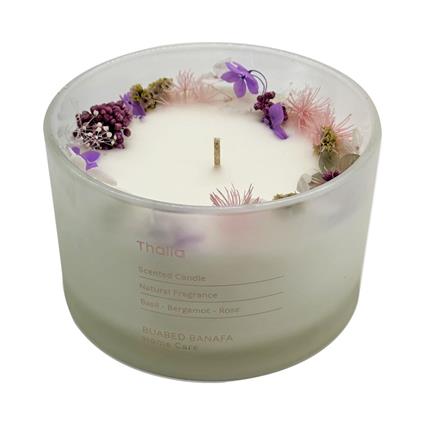The concept of incorporating flowers into Candles is not a recent innovation. In fact, the use of flowers in Candles dates back thousands of years to various civilizations around the world. One of the earliest known instances of Floral Candles can be traced to ancient Egypt. Egyptians used to infuse their candles with essential oils extracted from flowers and herbs to create aromatic and mood-enhancing atmospheres in their homes and temples.The Renaissance era witnessed a resurgence of interest in Floral Candles, as they became popular among European nobility and royalty. Intricately crafted candles adorned with floral motifs were often used as decorative pieces in palaces and castles. These candles were a symbol of opulence and were reserved for special occasions.
Fast forward to the present day, and floral candles have undergone a remarkable transformation. They are no longer confined to the realms of royalty or the elite. Instead, they have become accessible to people from all walks of life, adding a touch of luxury and elegance to everyday living.

One of the key factors driving the popularity of floral candles today is the resurgence of interest in natural and organic products. As consumers become more conscious of what they bring into their homes, they seek out candles that are crafted with natural ingredients, including pure essential oils extracted from flowers. These candles not only provide a delightful sensory experience but also offer the benefits of aromatherapy.
The choice of wax is crucial in candle-making. While paraffin wax is commonly used, many artisanal candle makers opt for natural alternatives like soy wax or beeswax. These natural waxes are not only eco-friendly but also provide a cleaner burn.The heart of a floral candle lies in its fragrance. Essential oils extracted from flowers are carefully selected to capture the essence of a particular bloom. For instance, rose essential oil is used to create a romantic and soothing ambiance, while lavender essential oil is known for its calming properties.The wick is strategically placed in the center of the candle mold. It needs to be the right size and shape to ensure an even burn. Many artisanal candle makers use cotton or wood wicks for a clean and sustainable burn.
Once the wax is melted and the essential oils are added, the mixture is carefully poured into the candle mold. This requires precision to ensure an even distribution of fragrance throughout the candle.Some floral candles are adorned with dried flower petals or botanicals, enhancing their visual appeal and reinforcing the floral theme.After the wax is poured, the candle is left to cool and set. This process can take several hours, depending on the size of the candle.Once the candle has fully set, the wick is trimmed to the appropriate length, ready for lighting.
Floral candles have transcended time and culture to become a cherished part of modern life. Their ability to combine the soothing glow of candlelight with the captivating scents of nature's most beautiful blooms makes them a source of comfort, relaxation, and beauty. Whether used for aromatherapy, decoration, or simply to enhance the ambiance of your home, floral candles continue to weave their enchanting spell, connecting us with the natural world and evoking a sense of tranquility and joy. As we embrace the resurgence of interest in natural and organic products, these exquisite creations are sure to remain a timeless and cherished addition to our lives.


